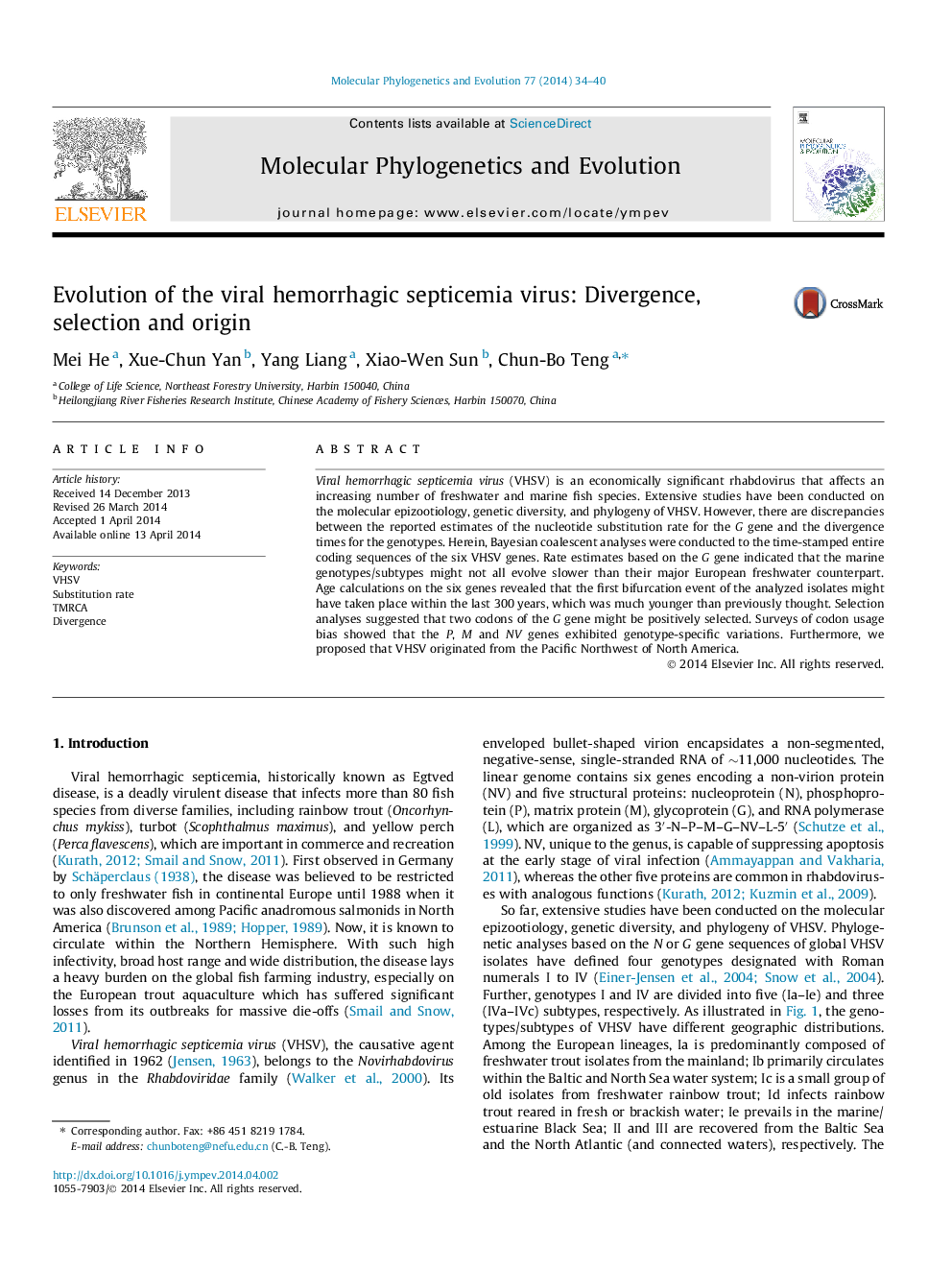| Article ID | Journal | Published Year | Pages | File Type |
|---|---|---|---|---|
| 5919447 | Molecular Phylogenetics and Evolution | 2014 | 7 Pages |
â¢The first bifurcation event of VHSV was estimated to have happened within the last 300 years.â¢In Europe, the marine lineages did not all evolve slower than the major freshwater counterpart.â¢Two codons of the G gene might be subjected to positive selection.â¢Each gene had additional codon usage bias independent of compositional constraint.â¢We propose that VHSV has a marine origin in the Pacific Northwest.
Viral hemorrhagic septicemia virus (VHSV) is an economically significant rhabdovirus that affects an increasing number of freshwater and marine fish species. Extensive studies have been conducted on the molecular epizootiology, genetic diversity, and phylogeny of VHSV. However, there are discrepancies between the reported estimates of the nucleotide substitution rate for the G gene and the divergence times for the genotypes. Herein, Bayesian coalescent analyses were conducted to the time-stamped entire coding sequences of the six VHSV genes. Rate estimates based on the G gene indicated that the marine genotypes/subtypes might not all evolve slower than their major European freshwater counterpart. Age calculations on the six genes revealed that the first bifurcation event of the analyzed isolates might have taken place within the last 300Â years, which was much younger than previously thought. Selection analyses suggested that two codons of the G gene might be positively selected. Surveys of codon usage bias showed that the P, M and NV genes exhibited genotype-specific variations. Furthermore, we proposed that VHSV originated from the Pacific Northwest of North America.
Graphical abstractDownload full-size image
